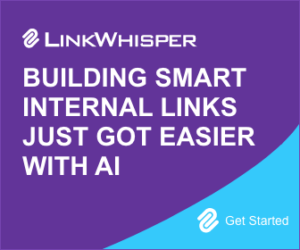Kevin Conti Of Software Ideas On How To Be A Successful Founder

When you buy something through one of the links on our site, we may earn an affiliate commission.
Kevin Conti joins us for another text based interview this week.
Kevin is the founder of multiple SaaS products, but is currently focusing on SoftwareIdeas.io. The name of the company says it all really!
It's a paid newsletter that gives potential SaaS founders software ideas. Kevin does the research and analysis into current successful software companies and determines whether or not there is room to compete.
There's a lot more to it than this which Kevin goes into in this interview, along with the story of his first venture which did not go so well!
Contents
- Hello! Could you introduce yourself?
- How did you start with Saas products?
- Why did you choose to start SoftwareIdeas.io?
- What has worked for you to grow your business?
- What does Churn look like for your business?
- What have you learned through building your business?
- Can you share examples of success from your customers?
- What tools do you use for your newsletter?
- What keeps you going when things are tough?
- Advice for other SaaS founders who are just starting out?
Hello! Could you introduce yourself?

Hi, I’m Kevin Conti! My main focus currently is Software Ideas, a market research and analysis company for serious founders who are looking for their next opportunity.
Software Ideas does roughly $10K MRR. I’ve just recently quit my day job as a software developer to go full-time on Software Ideas and future SaaS projects!
How did you start with Saas products?
I started with SaaS products two years ago with no audience and none of the “unfair advantages” that some people talk about. My only strengths were knowing how to write code and being willing to learn.
I started with my first SaaS, CoderNotes.io, which was completely a “scratch your own itch” type of idea.
I wanted a note platform for code snippets that had a powerful search engine behind it. This was so that I wouldn't have to worry about categorizing the snippets and struggling to find them later.
I spent about six months building the product, and on June 07, 2020, I launched CoderNotes on ProductHunt and was #1 Product of the Day for most of the day before settling into #2!

At this point, I thought I had everything figured out. I had hundreds of users heading to the site and tons of positive comments on ProductHunt, including people who said things like, “Thank you, I have always wanted this!”
I shared the metrics and the whole story behind the crazy ProductHunt launch experience here on Indie Hackers .
However, after the craziness died down, I quickly found out that there were a number of issues with my product. Most of them stemmed from the fact that I had committed the most common mistake that engineers make: I had focused on building the product I wanted instead of building something that potential users wanted.
After realizing my mistakes, I wrote a retrospective titled “5 Lessons Learned from Launching My First SaaS.” The goal of this was to help others avoid making the same mistake by entering a market where there isn’t much consumer interest.
Why did you choose to start SoftwareIdeas.io?

Software Ideas actually began as my own personal research to find my next SaaS opportunity.
I had learned from my first experience that it was very important to enter a market where there is already demand, rather than trying to innovate and create a completely new concept.
I began by simply looking at job boards to find software companies that were successful enough to be hiring. After all, if they were successful enough to have millions of dollars in payroll, they must be doing something right!
After a while, I realized I could perform the research better if I had access to some of the paid databases that offer company info – things like Crunchbase and Owler – and it would be far more effective than looking through job boards. The only problem was that these things cost thousands of dollars.
The price, combined with a hunch that this research might be valuable to other entrepreneurs looking to start their next business idea, led me to convert my research into a newsletter format. Then I started pre-selling to test for demand!
What has worked for you to grow your business?

One of the hot takes I have as a founder is that it’s important to discover a reliable marketing/distribution channel as soon as possible. With CoderNotes, I made the mistake of waiting to build the MVP before finding out how I could acquire customers, which was a huge mistake.
For Software Ideas, I decided to test channels first.
I did this by taking some of my existing research at the time, formatting it into a post (check out the original post here), and including the following snippet at the bottom:
“I'm considering making posts like this every week if there is enough interest.
If you would like (and would pay for) posts like these, reach out to me through my email. I'm giving away another free post just like this one to the people who email me there!
Thanks for reading and I hope you found it valuable!”
I then went and shared the post across a number of different channels, such as Twitter, Reddit, and Indie Hackers.
Those posts led to email conversations (which I’ve posted publicly) that resulted in over $200 of pre-sales before the newsletter even had a name!
This is a huge piece of why I decided to go through with creating the product and it set the stage for Software Ideas’ success and rapid growth to $10K+ MRR.
However, things have changed as the business has matured.
Here’s how Software Ideas is growing currently.
The number one way that people sign up for a premium subscription of the newsletter is after signing up for the free email list. The free version offers a weekly preview of all the market research and down-market opportunities we cover for the week.
Out of the top 10 ways that users have signed up over the past six months, the bulk has been from the free email list:

As such, the main focus for our growth is getting as many interested users on the free email list as possible. That’s why if you head to www.softwareideas.io, you will only see one call-to-action (CTA) to pay for the newsletter, but three CTAs to sign up for the free email list.
In fact, our above-the-fold CTA isn’t even to pay for the product – we just want you to see the research and judge it yourself!

Most of our traffic originally came from founder communities such as Indie Hackers and Twitter, but as we’ve grown, our organic traffic from Google has slowly started to eclipse these other channels.
If you look at the last 30 days of traffic, Google brings us nearly double the traffic that Indie Hackers does.

Right now, the main focus of the company from a marketing perspective is to continue to invest in SEO/organic traffic as well as word-of-mouth by adding an affiliate program and a referral program.
What does Churn look like for your business?
Customers tend to leave for 3 major reasons:
- They are no longer interested in starting a company, so the newsletter is no longer required
- They have discovered a business idea that they’re working on (either from the newsletter or externally) and no longer need the ideas and market research
- They have a difference in values when it comes to what makes a good business idea (most rare)
I have a different feeling around each category.
For category #1, I consider these churns a wash.
Software Ideas is specifically for very serious founders who are actively looking for their next software business, and if customers fall out of that category then there’s not much we can do to keep them.
For category #2, I consider it a success!
People who leave because they’ve started a company and no longer need the newsletter have received good value from the newsletter!
That said, there is still so much that Software Ideas can do to support early-stage founders. A lot of our product direction in the future will be based on helping founders go from “idea” to “traction”, which includes The Foundation course that I’m working on now.
Category #3 is rare, but it does happen.
The people who fall into category #3 are typically big believers in the “scratch your own itch” type of idea. This is the opposite premise the newsletter was founded on.
After all, the point of the research was so that I would avoid “scratching my own itch” and instead focus on profitable ideas for myself. These founders are very selective about which ideas they’ll consider, and typically I end up refunding them and wishing them luck.
What have you learned through building your business?
The biggest thing I’ve learned is that most early-stage founders are focused on completely the wrong aspects of their company.
It’s natural to focus on the product/MVP above all else. After all, that’s what people are going to be buying, and it needs to be good enough for customers to love it!
But for most founders I talk to, the hardest part of building a company isn’t writing the code (or using no-code tools) to build the actual product. It may be the most time-consuming, but it isn’t the hardest part.
The hardest part is the general category of “marketing.” Most founders I talk to want to have a few customer discovery calls, and if nothing comes up that kills the project they go straight into a building mode.
What’s worked best for me is to be far more focused on the distribution channels, trying to get a clear picture of how new potential customers can find out about Software Ideas. I focused on that aspect of the business early on which has made the initial growth much easier. It also allowed me to get an understanding of whether or not it was an idea worth pursuing.
For this reason, I always include a list of high-potential distribution channels for each idea in the Software Ideas newsletter. I want to make sure that we’re emphasizing the importance of exploring these channels, and not just handing subscribers an MVP with no way for them to turn that into an actual business.
I’m actually working with a couple of Software Ideas subscribers right now to make some case studies from the businesses that they’ve formed! Unfortunately at this point, I don’t have permission to share company names or more information, so I can’t speak about these in public yet.
That being said, here are some founders that are building in public that I can speak about.
- Ganesh Mani (@ganeshmani009 on Twitter) built and launched CrossPost App and reached #2 Product of the Day on Product Hunt!
- Chris Davies created Rentify based on the Software Ideas newsletter, which he then launched on AppSumo. Based on the questions on the AppSumo page, it looks like he may have had some technical issues, but I know that he’s seen a number of sales from this promotion alone.
- One reader (who may wish to remain anonymous) is building a very cool product called VexMap, a UX error monitoring software that’s currently in a free beta as they explore their positioning in the market.
I think that there’s some real opportunity here!
Substack, which is often used in this situation, is a horrible solution for a paid newsletter (in my opinion) – 10% fees plus payment processing fees is just ridiculous for someone looking to turn a profit.
I currently use a home-grown solution. I use MailChimp for the email aspects of Software Ideas, Stripe for billing, and I wrote my own Phoenix application for the membership site, which is where the newsletter archive lives.
If I were to do it over again, I’d look closer at Ghost as a blogging solution, but overall I’m quite happy with my setup for now.
What keeps you going when things are tough?
Ha! I could talk about this forever.
I’ve recently started sharing some of what’s been going on in my personal life over the past few months. Long story short, I’ve been dealing with some serious health issues in my family that completely changed how I’ve been able to work on the business.
Before, I probably would have made some platitudes about how to handle things falling apart, but I’d like to be real here – when you have things going on in your life that are more important than the company you’re founding, it’s one of the hardest things that you go through. What’s more, there’s no easy answer I could share with you, even if I knew the answer myself.
The one thing that has worked for me is to stay grounded.
It’s important to be honest with yourself as a founder, which can be difficult to do. All I could do when things were at their worst was to admit to myself that I wasn’t going to be able to accomplish everything I wanted to do and to try to be okay with it.
Perhaps the most important thing you can do when everything feels like it’s falling apart is to have someone there who can support you. Not just emotionally, but actually helping pick up the slack in the business. Being a solo founder is tough because most of the time it’s just you.
If you have people in your life who care about you and are willing to help where they can, even if it’s just answering support questions, it is a huge help in tough times.
Advice for other SaaS founders who are just starting out?
I’m fortunate in that I get to talk to a lot of founders that are just starting out. I get to see the most common mistakes that are being made, as well as the type of founders that end up being successful.
The biggest insight I have into the process of starting a company is to focus on:
- traction
- marketing
- distribution channels
And, to focus early on in the process!
For most engineers, building a product isn’t hard, it’s fun! And it might be challenging, but it’s almost never impossible.
So many engineers, myself included, fall for the trap of thinking that the hard part of starting a company is building the product that people want to buy. But that’s usually not the case! The hard part is finding ways to reliably attract new leads and customers.
In contrast, finding distribution channels is hard! You have to try a lot of them, and you never really know if your experiments failed because the channel legitimately isn’t a good fit or if you just did a bad job.
And for many products, it turns out that finding a single channel to acquire customers never happens or happens too late.
If you’re building a product but don’t have any experiments to prove that the channels you think will drive traffic to your product actually work, I highly recommend you start exploring ways to test it out.
Want to learn step-by-step how I built my Niche Site Empire up to a full-time income?
Yes! I Love to Learn
Learn How I Built My Niche Site Empire to a Full-time Income
- How to Pick the Right Keywords at the START, and avoid the losers
- How to Scale and Outsource 90% of the Work, Allowing Your Empire to GROW Without You
- How to Build a Site That Gets REAL TRAFFIC FROM GOOGLE (every. single. day.)
- Subscribe to the Niche Pursuits Newsletter delivered with value 3X per week
My top recommendations
















